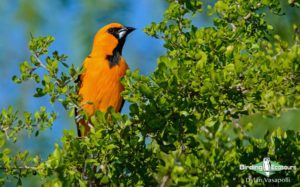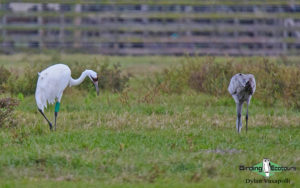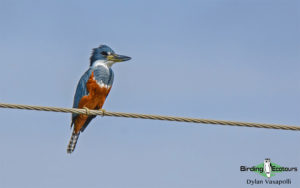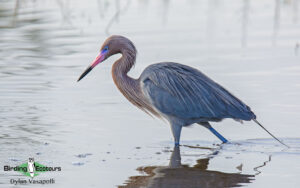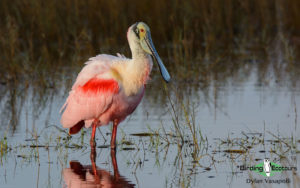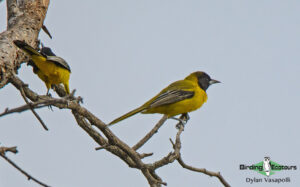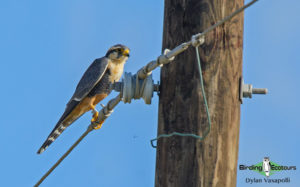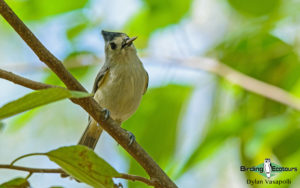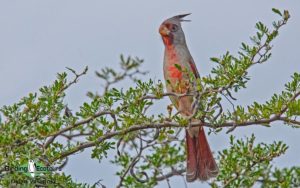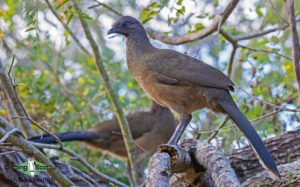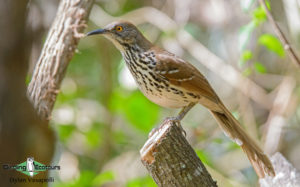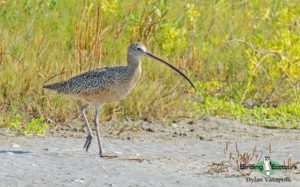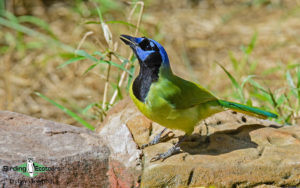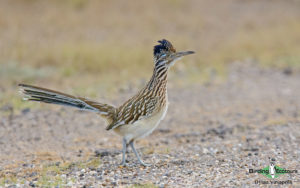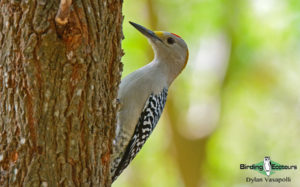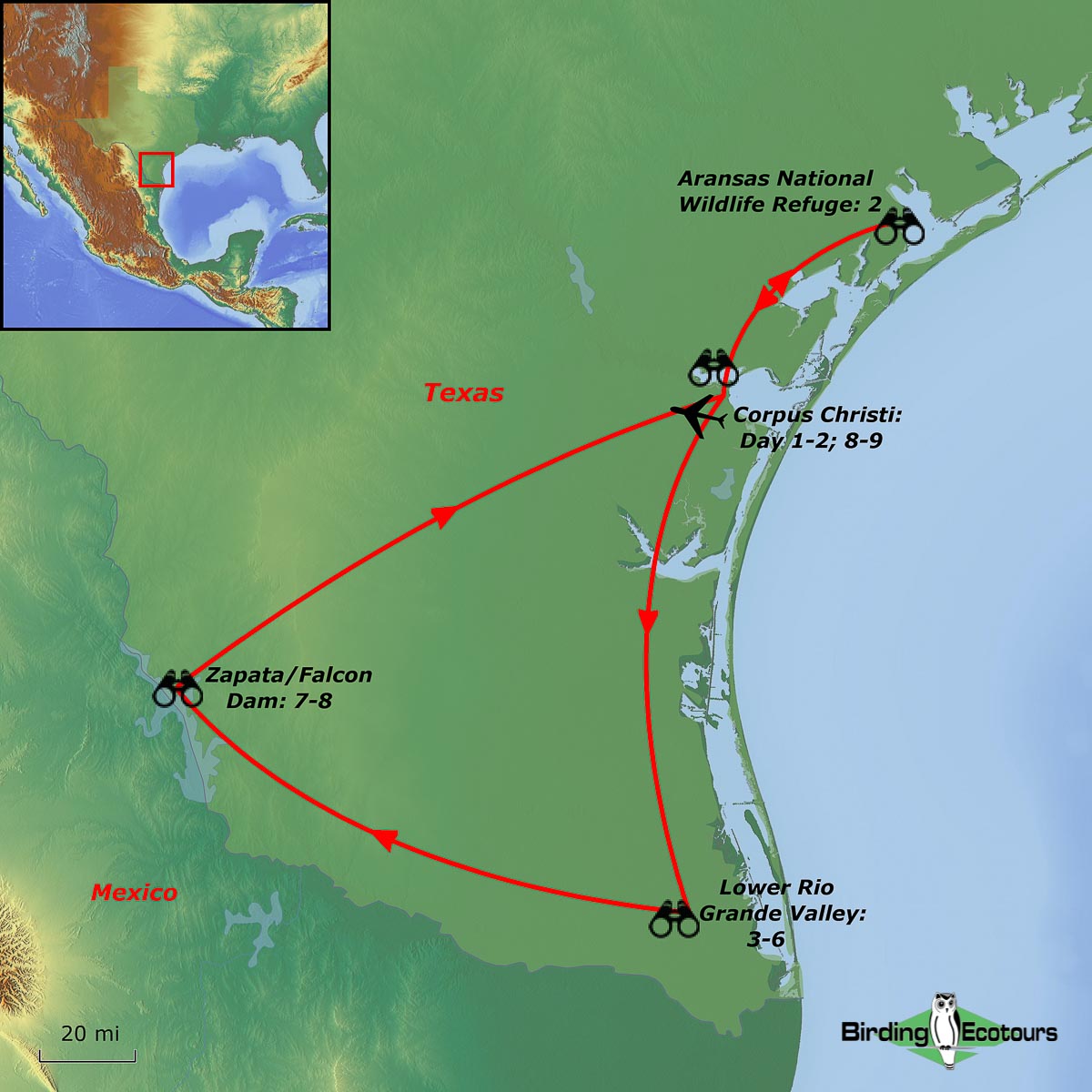Birding Tour USA: Texas Winter — Whooping Cranes and Rio Grande
Go to: Texas Spring Tour | USA Birding Tours | Birding Tours in North America | All our birding tours
Birding Tour USA: South Texas Winter —
Whooping Cranes and the Rio Grande Valley
December 2025/2026
Texas needs no introduction. The “Lone Star State” covers a vast area of the southern US, and incorporates a wide mix of habitats ranging from pinewoods and marshes along its eastern border with Louisiana, through to deserts and arid shrublands characteristic of America’s southwest (reminiscent of Arizona), and the verdant riverine woodlands of the Rio Grande Valley, a prelude to what lies further south in Mexico. The phrase, ‘everything is big in Texas’ holds true – Houston, San Antonio and Dallas-Fort Worth are some of the largest and most populous cities and metropolitan areas in the country, and the state is also home to one of the largest national parks in the country – Big Bend National Park (we arrange private tours here in the spring/summer, to look for the rare Colima Warbler – please specifically ask us about this!). The official bird list of the state, true to form, is also massive – numbering well over 650 species – which is a significant portion of the total species within the US.
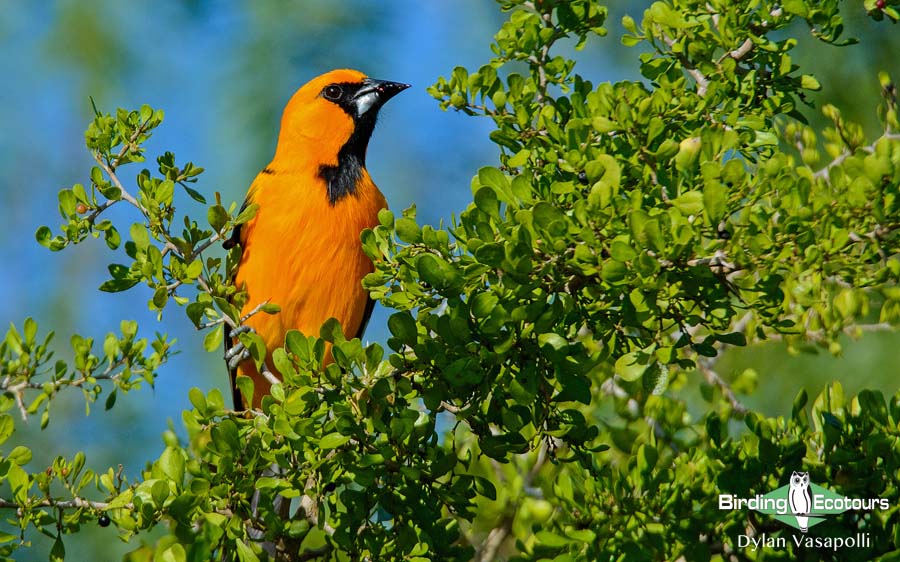
This short tour, timed at the start of winter, sees us focusing on the many resident specials of the state, and in particular, trying to find as many of the Mexican/Neotropical species as possible. Indeed, a great deal of bird species can only be reliably found in Texas, within the US. First and foremost is Whooping Crane. This species has a tragic history, having been on the verge of extinction with fewer than 20 individuals left in the wild, before a great rehabilitation and reintroduction program was set in motion. With non-stop work over decades, this species has been down-listed to Endangered by the IUCN Red List, and now some 300+ individuals survive in the wild. This is an important target for us on this tour, and we dedicate time around Corpus Christi, at the start of this tour, where we can access the Aransas National Wildlife Refuge, specifically targeting this highly sought-after species.
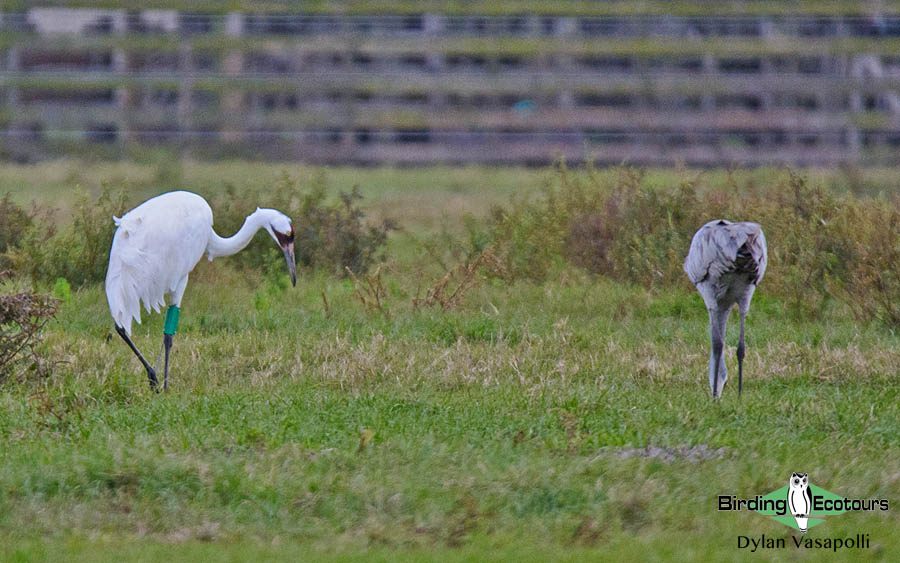
Following on, this tour ventures into the Lower Rio Grande Valley, where a number of days are spent exploring the excellent and vast network of state parks, preserves and wildlife areas. This wild part of the state supports a range of species more typically found further south in Mexico, and indeed the Neotropics. Perhaps no better example of this exists with the fact that Ocelot occur in the area, though a great deal of luck is needed to see this secretive and rare cat. A wide range of species will be targeted, including such charismatic species as Plain Chachalaca, Aplomado Falcon, Ringed Kingfisher, Golden-fronted Woodpecker, Green Jay and Long-billed Thrasher. We will also make a special effort for rare species like Morelet’s (White-collared) Seedeater, and will keep an ear to the ground for any rarities that may be present in the area – which may include such sought-after species as Northern Jacana and Crimson-collared Grosbeak. In addition, a number of waterbirds will be seen, everything from spoonbills to pelicans and curlews, and a number of species more regularly associated with the drier American southwest, such as Greater Roadrunner and Black-throated Sparrow, should also feature.
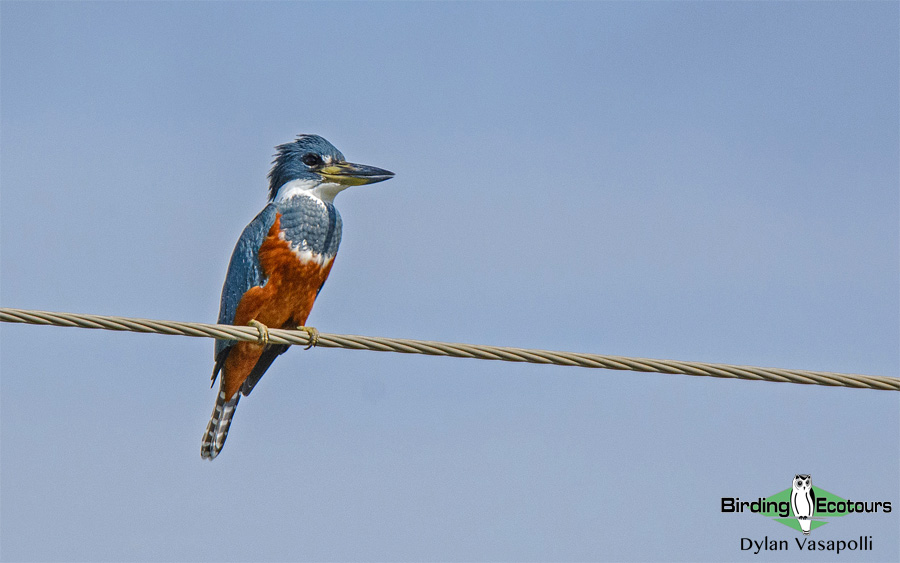
Itinerary (9 days/8 nights)
Day 1. Corpus Christi
This is your arrival day, and you can arrive in Corpus Christi at your leisure. We will arrange airport transfers through to our hotel for the evening. Should there be time available in the afternoon, we may decide to do some local birding to kick-start our trip list, however, the trip will begin at 6pm, when we will meet in the lobby and enjoy our first meal together.
Overnight: Corpus Christi
Day 2. Aransas National Wildlife Refuge for Whooping Crane
We will have a full day available to explore the bird-rich Aransas National Wildlife Refuge. The star of the show here is the stunning Whooping Crane, which is a true conservation success story. In the early 1900s, this species was bordering on extinction, with only a meagre 15 individuals left in the wild, and with incredible dedication and effort (through hand-rearing and reintroduction programs), their numbers have risen to roughly 300 individuals in the wild. Though a long road still remains, the future certainly looks more promising for this rare species.
The best way to experience this site, and indeed the cranes, is via a boat trip into Aransas Bay. Our time with the cranes is likely to be interrupted by a wide variety of coastal species, some of which may include the sought-after Reddish Egret and the colorful Roseate Spoonbill, amongst many others. Skulking species such as Least and American Bitterns, King and Clapper Rails, Sedge Wren and Seaside Sparrow may also be seen, if we’re lucky.
Overnight: Corpus Christi
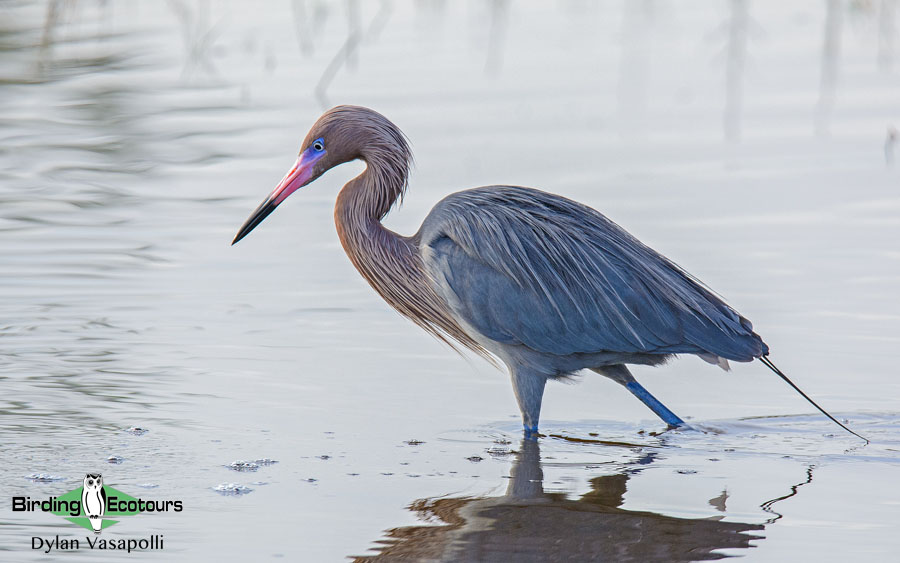
Day 3. Transfer to the Rio Grande Valley – birding Laguna Atascosa National Wildlife Refuge and South Padre Island
We have a final morning available to spend birding around Corpus Christi – primarily as a backup for Whooping Cranes, should we have missed them the previous day. However, if we have already seen the cranes, and indeed many of the other specials of Aransas National Wildlife Refuge, we will likely begin our transfer to the Lower Rio Grande Valley earlier on and have more time for birding in the valley.
Our afternoon will be spent focusing on the large waterbodies and coastal scrub thickets of the Laguna Atascosa National Wildlife Refuge, and the mudflats and shorelines of South Padre Island. A wide range of ducks and other waterfowl is usually present at Laguna Atascosa, and we’ll be on the lookout for wintering Greater White-fronted Goose, American Wigeon, Redhead and Ruddy Duck, amongst others – and we even have the off-chance of rare species such as Eurasian Wigeon. However, perhaps more attractive to us are their hides/blinds, offering an excellent opportunity to see some of the skulking species of the valley, such as White-tipped Dove and Olive Sparrow. We should also get our first opportunity to see some of the many specials of the US, largely confined to the Lower Rio Grande Valley, such as Ladder-backed Woodpecker and Long-billed Thrasher. Additionally, this is a good site for the charismatic Greater Roadrunner, and other sought-after species such as Crested Caracara and Scissor-tailed Flycatcher.
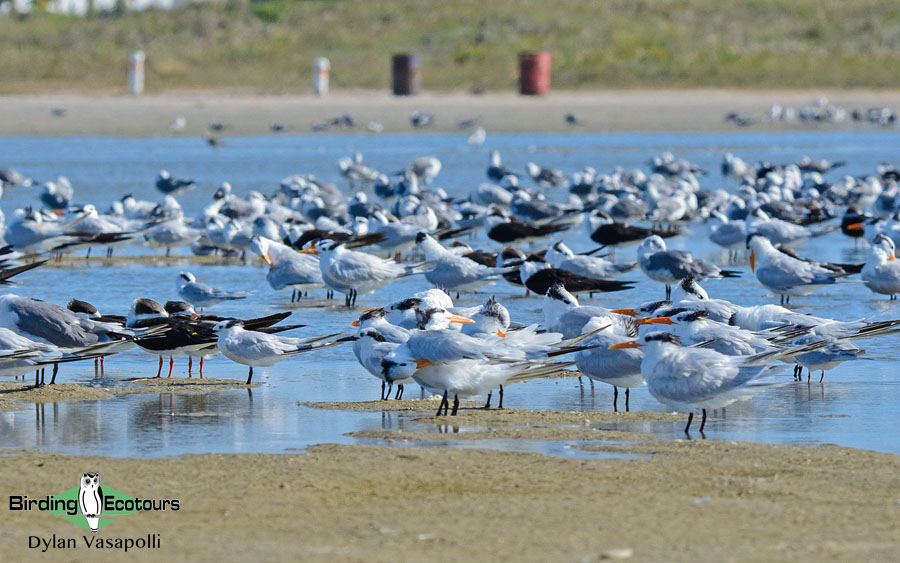
South Padre Island will see us focusing on the shorebirds that are found in the coastal mudflats here, and we’re likely to add a number of species to our list. Flocks of shorebirds are dominated by numbers of Grey Plover, Sanderling, Dunlin, Least and Semipalmated Sandpipers and Short-billed Dowitcher, and in between these we’ll be on the lookout for the likes of American Avocet, Piping Plover, Long-billed Curlew, Marbled Godwit and Willet, amongst others. Flocks of Black Skimmers are usually present, often with a range of terns and gulls, including Royal, Cabot’s (a split off Sandwich Tern) and Forster’s Terns. This is also a good place to compare both Brown and American White Pelicans, often side-by-side.
We will eventually make our way to our hotel in the Harlingen area, where we will settle in for the first of our four nights here.
Overnight: Harlingen
Days 4 – 6. Birding the Lower Rio Grande Valley
We have three full days to spend birding and exploring throughout the Lower Rio Grande Valley. Some of the region’s top birding sites, such as Bentsen-Rio Grande Valley State Park, Estero Llano Grande State Park and Santa Ana National Wildlife Refuge, will all feature prominently on our birding route. We will keep our exact itinerary somewhat flexible, to account for the presence of any rarities (which your guide will watch for on eBird, and elsewhere). Although no particular species is especially likely, the possibility of a Mexican stray such as Northern Jacana, Amazon Kingfisher, Crimson-collared Grosbeak, Rose-throated Becard or Blue Bunting adds excitement to the birding experience here.
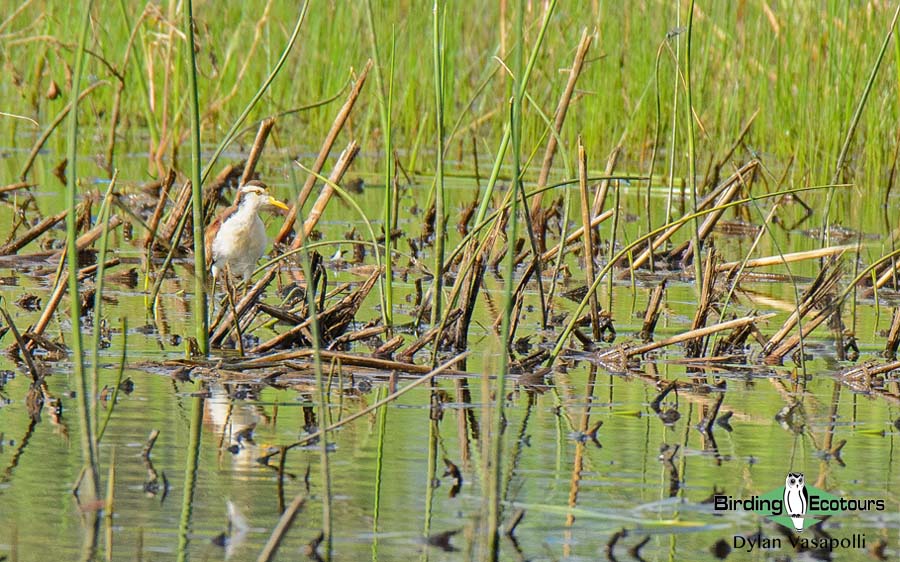
Aside from any possible rarities, a wide range of other specials will be targeted in the valley (occurring nowhere else in the US with any regularity), and we’ll keep a keen eye open for the likes of Least Grebe, Plain Chachalaca, White-tipped Dove, Buff-bellied Hummingbird, the massive Ringed Kingfisher, Golden-fronted Woodpecker, Couch’s Kingbird, Great Kiskadee, Northern Beardless Tyrannulet, Clay-colored Thrush, Green Jay, Black-crested Titmouse, the beautiful duo of Altamira and Audubon’s Orioles, and Olive Sparrow, amongst others. Other rare species we have opportunities for include Hook-billed Kite, Grey Hawk and Groove-billed Ani. Further species restricted to the southern border regions of the US that we should also encounter here include species such as Harris’s Hawk, Vermilion Flycatcher and Bronzed Cowbird.
Open grassy habitats are also present in the area, and support another key target – Aplomado Falcon. This is a highly sought-after species that is extremely localized in the US, and our time searching for this species often produces other open-country, and drier-country species such as Northern Bobwhite, Eastern Meadowlark, Cactus Wren, Lark, Cassin’s and Botteri’s Sparrows (amongst many other wintering sparrows), the stunning Pyrrhuloxia and even the scarce Sprague’s Pipit. Additionally, this is also usually a good area to search for White-tailed Kite and White-tailed Hawk. We will be sure to spend an evening at Bentsen-Rio Grande Valley State Park looking for Elf Owl and Pauraque (we sometimes see the latter at its day roost as well), and another evening seeking out flocks of Green Parakeet and Red-crowned Amazon, as they head back to urban roost sites. These feral species are countable for your ABA area list.
Overnight: Harlingen
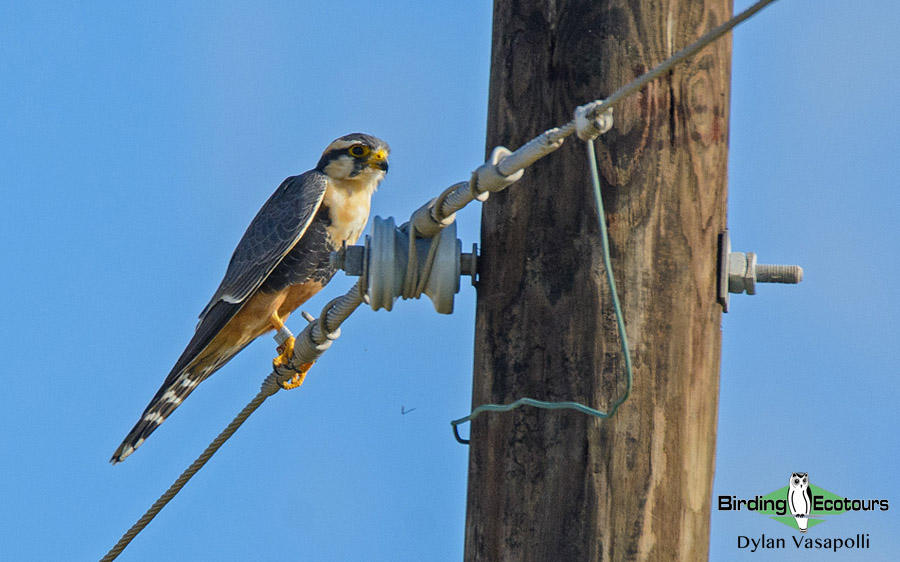
Day 7. Birding the Rio Grande Valley – Salineño and the Falcon Dam area
Our exact schedule today depends on which targets we may still be missing from the lower valley, and our morning may be spent birding various sites in the Lower Rio Grande Valley. We will however, end our time in this section of the valley at some stage in the morning, and transfer deeper into the valley – with stops at the Salineño Wildlife Preserve and the area around Falcon Dam and Falcon State Park. Here, the lush riparian woodlands, so typical of the Lower Rio Grande Valley, grow only along the immediate riverbank. The famous feeders at Salineño are one of the best places to see the stunning Audubon’s Oriole, and the river frontage and riverine woodland here occasionally produce sightings of Muscovy Duck, Grey Hawk and Red-billed Pigeon. Brown Jay used to be more regular, but is seldomly seen these days. Falcon Dam supports a more arid selection of species, and here we have chances for species such as Scaled Quail, Chihuahuan Raven, Verdin, Cactus and Bewick’s Wrens, Black-throated Sparrow, and Pyrrhuloxia, amongst others. Should we have missed Greater Roadrunner earlier on in the trip, we have another good chance in the area.
Overnight: Zapata
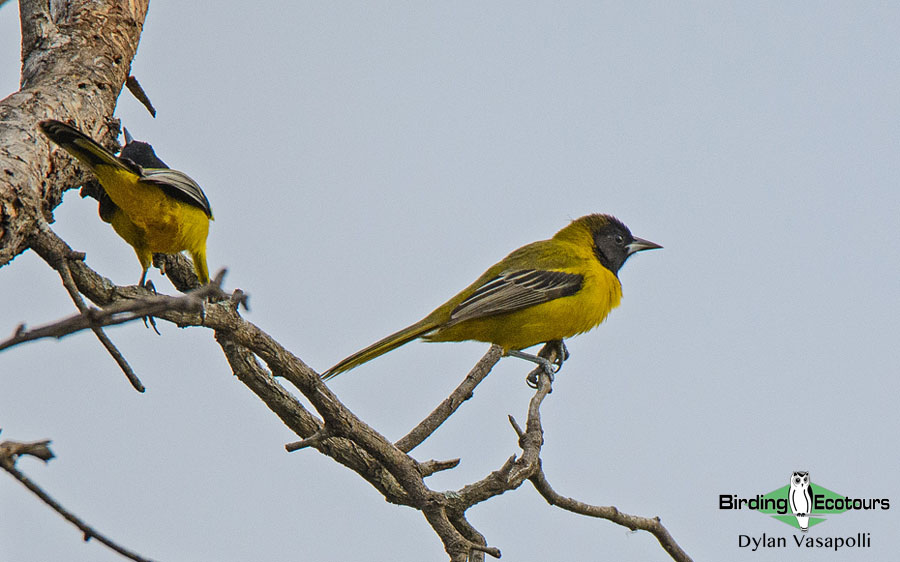
Day 8. Birding Zapata and San Ygnacio, and transfer to Corpus Christi
We will spend the morning at either the town of Zapata or San Ygnacio, depending on recent reports of the increasingly rare (for the US) Morelet’s (White-collared) Seedeater. Due to an extensive taxonomic overhaul, this tiny bird is the only remaining member of the tanager family (Thraupidae) occurring in the United States. Should any of the drier-country species, such as Scaled Quail still be eluding us, we will also dedicate some further time to birding the Falcon Dam area. In the afternoon, we will eventually transfer back to Corpus Christi, where we anticipate arriving in the early evening. We will enjoy our last dinner together, reflecting over some of the birding highlights of this exciting part of the US.
Overnight: Corpus Christi
Day 9. Departure
The tour ends following breakfast, and you can depart for home at your leisure.
Please note that the itinerary cannot be guaranteed as it is only a rough guide and can be changed (usually slightly) due to factors such as availability of accommodation, updated information on the state of accommodation, roads, or birding sites, the discretion of the guides and other factors. In addition, we sometimes have to use a different international guide from the one advertised due to tour scheduling.
Download Itinerary
